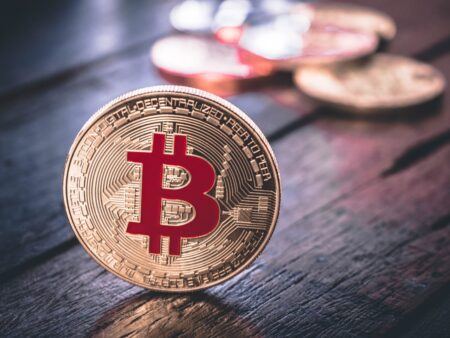Cryptocurrencies have gained a new use case over the last few months: earning interest on holdings. Now more than ever, users have options to stake/lend their cryptos for a profit, but is it a good idea?
With the S&P 500 is still enjoying one of the largest bull runs in its history and policymakers helping the market grow through extremely low interest rates – which are now negative in some countries – the cryptocurrency space offers an attractive alternative, with yields that can be as high as 20% a year.
While compounding your cryptos can be a great way to make money work for you in a time in which bond yields in the U.S. only go up to 2.3% and are negative in most countries in Europe, there are also various risks associated with staking and lending cryptocurrencies.
How Can You Earn on Your Crypto Holdings?
First, let’s look into how you can earn interest using your cryptocurrency holdings. There are two main ways to passively earn: one is by staking your cryptos to earn rewards, while the other is to lend them on platforms for a set interest rate.
These platforms include cryptocurrency exchanges and decentralized finance (DeFi) platforms. On exchanges returns are around 5% a year, while on DeFi platforms they can be as high as 10% on stablecoins like DAI and USDC.
Popular cryptocurrency exchanges like OKEx offer users the ability to lend popular cryptocurrencies like Bitcoin, Bitcoin Cash, and Ethereum at a rate that goes up to 4% a year. Through its ‘savings’ option OKEx users can receive interest on their holdings on a daily basis, and are free to withdraw them at will.
Staking Rewards, on the other hand, depend on the cryptocurrency we’re looking into. Staking Rewards, a website dedicated to tracking staking returns, shows potential returns go up to 101% a year in some little-known tokens.
For more popular cryptocurrencies, these rewards can still be 10% a year or more, but there’s more to staking cryptocurrencies to make money than meets the eye. For these types of cryptocurrencies, mining pools like OKEx Pool offer flexible staking options so users don’t have to keep their funds locked for periods they don’t want to.
Staking as an Option
Returns on staking look extremely attractive, if we consider the alternatives are bonds and savings accounts that don’t yield enough to keep up with inflation. There are however various risks to consider.
First let’s look into staking. The token that gives its holders a 101% return a year according to Staking Rewards is Livepeer (LPT), a cryptocurrency with two main trading pairs: LPT/ETH on IDEX, and LPT/BTC on Poloniex.
Its total trading volume across these pairs was of little over $14,000 in the last 24-hour period, which means its illiquidity will make any sizable investment risky. If we consider these two platforms may delist the token at any time, investors may end up holding large amounts of virtually worthless coins.
More liquid and popular cryptocurrencies users can stake include, for example, EOS. EOS is traded across multiple exchanges, is a top 10 cryptocurrency by market cap, and has been around for a while. Staking it yields a reward around 4.38%.
While EOS has its advantages, just like any cryptocurrency it suffers severe price fluctuations. Over the past 12 months it hit a low of $1.55, and a high near $9. It’s currently trading at $3.36 and is down 38.4% over said period.
 Source: CryptoCompare
Source: CryptoCompare
It’s worth pointing out users may want to stake their holdings – on EOS for example – to support the cryptocurrency’s network. On the OKEx Pool a total of 115 million EOS votes are contributed to the EOS community thanks to the staked tokens, supporting its overall network.
As CryptoGlobe reported, OKEx Pool has vowed to maintain EOS’ security and stability via a stable block production. The pool has topped the EOS Block Producer (BP) rankings thanks to this.
Lending Pros and Cons
The risks associated with lending can be relatively small if you use well-known platforms like OKEx. The funds stored in OKEx’s savings service are, according to the exchange, used for its margin loan services. Cryptos stored there can be easily transferred or withdrawn and earn interest on a daily basis,
There are nevertheless risks involved, as when a cryptocurrency user doesn’t control the private keys to his wallet, funds can be seized or lost without them having a chance to recover them. Moreover, when there’s a critical failure losses can be socialized and distributed among margin holders and lenders.
Such was the case earlier this year when Poloniex came up short $14 million thanks to a margin trade on the obscure CLAM altcoin. It socialized the losses, and lenders faced a 16% haircut on the bitcoin loans, but later on worked to repay its users. Only around 0.4% of its user base was affected.
Lending on DeFi platform is seen as safe by some, but cryptocurrencies use to lender are often associated with more complex systems. DAI, for example, is a stablecoin that could lose its peg to the U.S. dollar when users need to cash out. Data shows that at times its price was below $0.95, even if for relatively short periods.
If a DeFi platform goes down, moreover, it may also be extremely hard to recover funds from the smart contract they were sent to. Overall, when it comes to lending the safest bet may be renowned cryptocurrency exchanges.
While hacks have been known to occur, exchanges that have set a name for themselves don’t go down without a fight, and are incentivized to ensure users’ funds aren’t lost to keep their business. Exchanges like OKEx have funds set aside to ensure their users aren’t affected by system failures.









